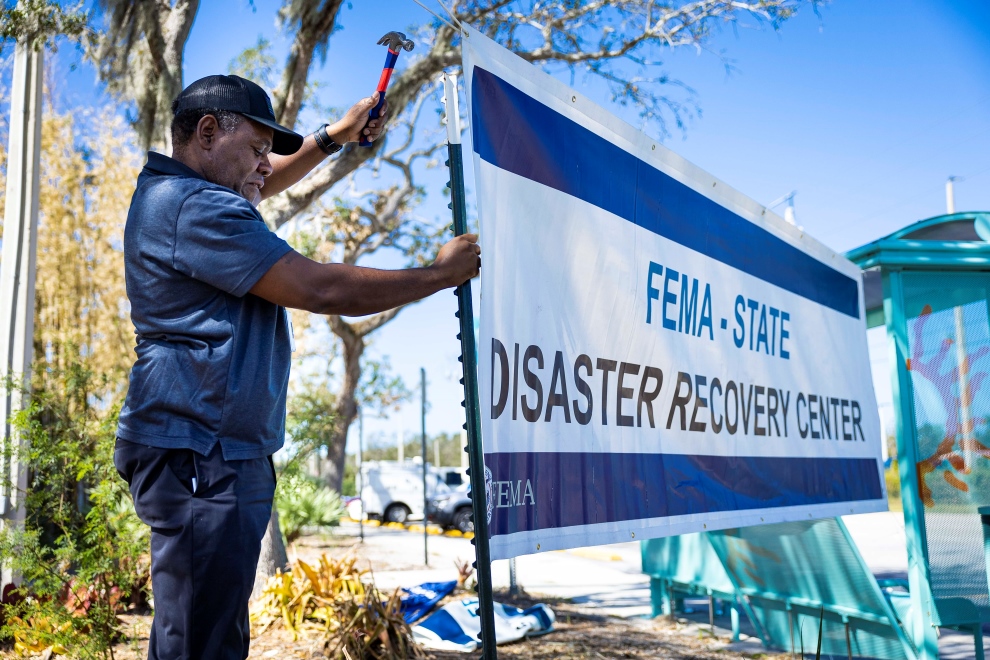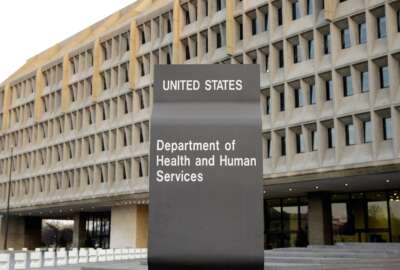FEMA using ‘every flexibility’ to staff up for hurricane recovery efforts
OPM has launched an emergency hiring authority to let agencies skip some steps of the recruitment process and onboard feds more quickly for hurricane response.
Agencies working on the front lines in the aftermath of hurricanes Helene and Milton now have another option for potentially easier, quicker hiring of federal employees for response and recovery efforts.
For agencies that may have an immediate need for additional support, the Office of Personnel Management initiated an emergency hiring authority last week, which lets agencies circumvent some of the lengthier steps of the typical federal recruitment process to onboard employees more quickly.
The hiring authority is mainly focused on bringing in more feds to help with direct response and recovery from Helene and Milton, but OPM clarified that agencies can recruit employees for response to any hurricane during this season. For instance, alongside ramped-up hiring efforts in areas impacted by Helene and Milton, the Federal Emergency Management Agency (FEMA) is also currently hiring in Houston and Austin, Texas, to help with response efforts in the aftermath of Hurricane Beryl.
By using the emergency hiring authority, agencies can skip some steps of the recruitment process, such as publicly posting an open position. But agencies do still have to apply veterans’ preference and follow other general federal recruitment requirements.
New hires brought in through OPM’s new emergency hiring authority would be able to work for an agency on a temporary basis for one year, with the possibility of extending their stint to up to two years, as needed and at OPM’s discretion. Any hired workers would also be able to get access to federal health benefits as well as paid annual and sick leave.
A FEMA spokesperson told Federal News Network that the agency already has a “great deal of flexibility” to onboard staff for disaster response efforts. But the spokesperson added that the agency is currently working with its hiring managers to determine where the new OPM flexibility would make sense to use.
When responding to disasters, FEMA makes most of its hires using the authorities allowed under the Stafford Act, a 1988 law constituting most federal disaster response activities. But that doesn’t mean other recruitment options are off the table. FEMA Administrator Deanne Criswell said the agency focuses on hiring individuals already local to a disaster area to help communities in a hurricane’s aftermath.
“We use every flexibility within our hiring authorities to help meet the community’s needs,” Criswell told reporters Friday during a press conference.
Story continues below photo gallery.
In many cases, FEMA hires staff for disaster response to full-time positions lasting an initial 120 days, which can be extended as needed. But the one-to-two-year options under OPM’s new emergency hiring authority may come in handy. Complete hurricane recovery and response efforts can take longer than a few months.
“This is what helping people before, during and after disasters is all about. Not just get people back on their feet, but to set them up for success. To not just repair communities but build them back more resilient for future incidents,” Criswell said. “This is what we at FEMA do. It is our mission and our commitment to all of those that have been affected by these historic storms. [For] all the states impacted, we will be alongside them for as long as it takes.”
Thousands of FEMA staff have already been deployed for response efforts to Helene and Milton. The agency has posted several more job announcements in western North Carolina, with plans to put up even more openings. FEMA also launched a new program this week for hiring “community liaisons” to assist in North Carolina communities as they work through recovery and rebuilding efforts.
FEMA also announced Tuesday that it is looking to fill over 600 temporary jobs in Gainesville, Melbourne Beach, Sarasota and Tallahassee, Florida, for help with recovery from Hurricane Milton. In the coming weeks and months, Criswell said she expects FEMA will hire even more people from the community.
The emergency local hires often help FEMA improve its disaster assistance and support efforts in the long run as well.
“We find that some of our long-standing employees and some of our best employees started out as a local hire in a community that was impacted — they become reservists or part of our long-term workforce,” Criswell said.
Working alongside FEMA to respond to Helene and Milton, the Interior Department has additionally deployed 200 employees for law enforcement, firefighting, emergency management and search and rescue needs, according to the agency. Another 500 agency employees have been working on response and recovery directly on Interior property.
An Interior spokesperson said the agency doesn’t have a “present intent” to hire more employees using the new authority from OPM. The agency, however, plans to keep the authority in mind, should FEMA need further support, and as current employees work to recover from the damages to Interior property.
Interior also offers mental health resources to its employees currently deployed to respond to the hurricanes, who may be experiencing heightened stress during the emergency situations.
OPM’s hiring authority and other recruitment flexibilities are mostly likely to be used by agencies such as FEMA, the Interior Department and other frontline agencies. But others have been stepping up to provide assistance as well in the aftermath of the two major hurricanes this season.
The IRS, for example, said it “stands ready” to offer tax-related assistance to impacted individuals recovering from the storms. The IRS automatically gives taxpayers in disaster areas more time to file returns and pay their taxes.
OPM also previously authorized emergency leave transfer programs for federal employees working in areas that have been impacted by Helene as well as Milton.
Copyright © 2025 Federal News Network. All rights reserved. This website is not intended for users located within the European Economic Area.
Drew Friedman is a workforce, pay and benefits reporter for Federal News Network.
Follow @dfriedmanWFED








